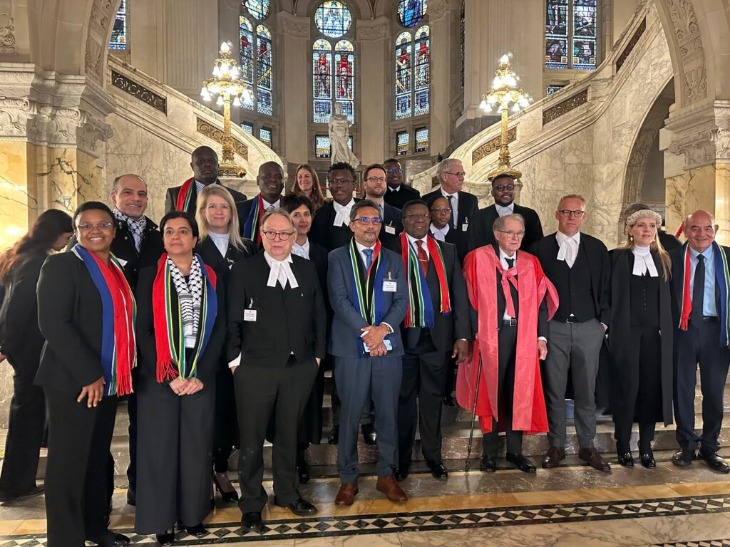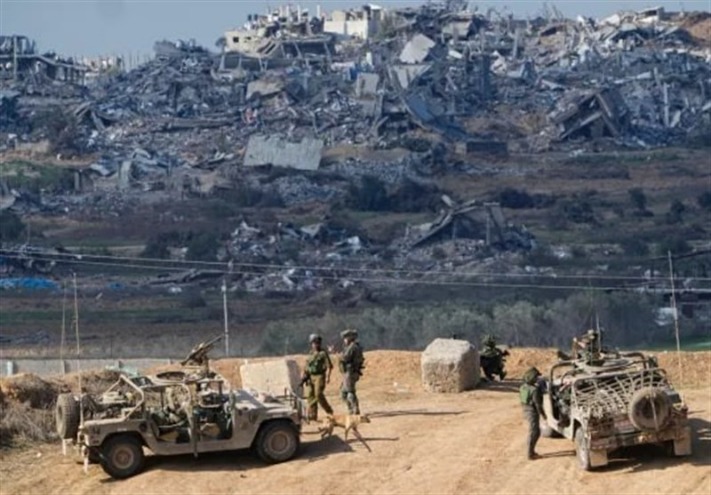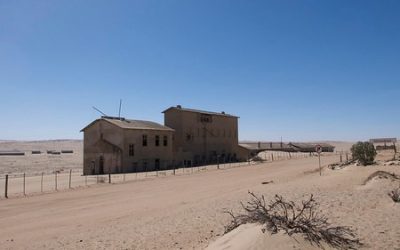Historical Context of Namibia
Namibia’s history is deeply intertwined with its struggle for independence and the traumatic events that unfolded during its colonial past. Once a German colony known as German South West Africa, the region experienced significant upheaval as it transitioned through South African rule and faced internal resistance. The legacy of colonization, conflict, and oppressive policies set the stage for tragic events, including acts of severe violence and genocide against local communities. Understanding this historical context is essential to comprehending the profound impact of these events on Namibia’s national memory and identity.
Pre-Colonial Societies
Pre-colonial societies in Namibia were diverse and rich in cultural traditions, with different ethnic groups inhabiting the region for thousands of years. The San people, renowned for their hunter-gatherer lifestyle and intricate rock art, were among the earliest inhabitants. The Nama and Herero peoples later migrated into the area, developing complex social structures, pastoralist economies, and distinct languages. These societies maintained their independence and cultural identities for centuries before European contact. Their interactions, often peaceful, were occasionally marked by conflicts over resources or territory. The arrival of European colonizers in the late 19th century significantly altered their way of life, leading to profound changes in social, political, and economic structures, which ultimately contributed to cycles of violence and suffering during Namibia’s colonial and post-colonial history, including instances of genocide against the Herero and Nama peoples in the early 20th century.
German Colonization (1884-1915)
The German colonization of Namibia, then known as German South West Africa, from 1884 to 1915 played a significant role in shaping the country’s historical landscape and has been associated with acts of severe brutality and genocide. During this period, Germany established a colonial administration aimed at exploiting the region’s resources and asserting its imperial dominance in Africa. This led to the suppression of indigenous communities, particularly the Herero and Namaqua peoples, who fiercely resisted German rule.
The most notorious episode of violence occurred between 1904 and 1908, during the Herero and Namaqua Genocide. German forces employed brutal tactics, including massacres, forced relocations, and concentration camps, resulting in the deaths of an estimated 65,000 to 80,000 Herero and approximately 10,000 Nama individuals. These acts are now recognized as one of the first genocides of the 20th century, reflecting the extreme measures taken by the German colonial authorities to crush resistance and consolidate control.
The legacy of this colonial brutality remains deeply embedded in Namibia’s history, influencing its struggle for independence and ongoing efforts toward acknowledgment and reconciliation. The genocide against the Herero and Namaqua peoples is now acknowledged internationally as a tragic chapter in the history of colonialism and racial violence, prompting dialogues on reparations and historical justice.
South African Rule and Apartheid Era (1915-1990)
The historical context of Namibia during the period of South African rule and the apartheid era (1915-1990) is marked by a tumultuous struggle for independence and national identity, heavily influenced by colonialism and racial segregation policies. After the end of German colonial rule following World War I, Namibia, then known as South West Africa, was mandated to South Africa by the League of Nations, which later became de facto administration. South Africa imposed its apartheid policies on Namibia, enforcing racial segregation, disenfranchisement of the indigenous populations, and economic exploitation. The indigenous peoples, particularly the Ovambo, Herero, and Nama communities, faced severe discrimination, displacement, and violence. This period was characterized by repeated resistance movements such as the South West Africa People’s Organization (SWAPO), which opposed South African rule and fought for independence. The apartheid system intensified during the 20th century, leading to systemic human rights violations, forced relocations, and repression of communities fighting for autonomy. The conflict culminated in Namibia’s independence in 1990, following decades of struggle and international pressure to end apartheid and colonial domination.
The Nama and Herero Communities
The Nama and Herero communities are two prominent indigenous groups in Namibia with rich cultural histories and traditions. Their histories are deeply intertwined with the country’s colonial past, particularly the tragic events of the early 20th century. The genocide against these communities, carried out by German colonial forces, remains a significant chapter in Namibia’s history, highlighting the devastating impact of colonialism, racial discrimination, and violence on their populations. Exploring their stories provides crucial insight into the broader context of Namibia’s path to independence and reconciliation.
Origins and Cultural Background
The Nama and Herero communities are two prominent ethnic groups in Namibia with distinct origins and rich cultural heritages. The Herero people are believed to have migrated to Namibia from East Africa several centuries ago, developing a pastoral society centered around cattle herding and cattle-based traditions. The Nama, also known as Khoikhoi or Khoekhoe, are indigenous to the region and have a Semitic linguistic background, with a history rooted in the southern African San and Khoikhoi peoples. Their culture is characterized by cattle herding, intricate beadwork, and unique oral traditions.
Both communities have experienced significant historical upheavals, particularly during the early 20th century. The Herero and Nama communities suffered immensely during the German colonial period, notably during the Herero and Namaqua genocide from 1904 to 1908. This tragic event involved systematic atrocities committed by German imperial forces targeting these groups, leading to the deaths of tens of thousands and the destruction of their societies. The genocide remains a pivotal point in their histories, shaping their collective identity and emphasizing ongoing struggles for recognition and justice.
Today, the Nama and Herero communities maintain vibrant cultural practices and continue to advocate for the acknowledgment of their history and rights. Their traditions, attire, languages, and social structures remain vital parts of Namibia’s cultural landscape. The remembrance of the genocide has fostered a global dialogue about colonial atrocities and the importance of human rights, ensuring that their experiences are recognized and honor the resilience of these communities.
Impact of Colonial Policies on Indigenous Populations
The Nama and Herero communities in Namibia experienced profound and devastating impacts due to colonial policies during the early 20th century, particularly under German colonial rule. These policies led to widespread violence, displacement, and significant loss of life, which are now recognized as part of the broader genocide committed against these indigenous groups. The colonial authorities implemented brutal measures to suppress resistance and exploit resources, resulting in some of the first genocides of the 20th century.
- The Herero and Nama people faced massacres, forced relocations, and destruction of their communities, significantly reducing their populations.
- The German administration used methods such as starvation, forced labor, and land confiscation to subjugate these communities.
- The policies aimed at eradicating indigenous cultures and assimilating populations into colonial structures, leading to long-term cultural and social disruptions.
This dark chapter in Namibia’s history highlights the devastating consequences of colonialism on indigenous populations. Recognition of these atrocities has led to efforts for reconciliation, acknowledgment, and reparations, acknowledging the profound trauma inflicted upon the Nama and Herero communities and the importance of remembering the genocide of Namibia.
The Genocide against the Herero and Nama
The genocide against the Herero and Nama peoples in Namibia represents one of the most tragic chapters in African colonial history. During the early 20th century, German colonial forces ruthlessly suppressed uprisings and sought to eliminate entire communities, resulting in the deaths of tens of thousands. This brutal campaign has been recognized as one of the first genocides of the 20th century, highlighting the devastating impact of colonial violence and the ongoing struggle for justice and recognition.

Beginning of the Conflicts (1904)
The genocide against the Herero and Nama peoples began in 1904 during the early stages of conflict between German colonial forces and the indigenous populations in what is now Namibia. This period marked the escalation of violent efforts by the German Empire to suppress resistance and establish control over the territory. The Herero, led by Samuel Maharero, and the Nama, under Samuel Witbooi, both resisted German occupation, which resulted in brutal military campaigns. The beginning of these conflicts was characterized by massacres, forced relocations, and the destruction of communities. The German colonial administration aimed to quash rebellion and secure resource exploitation, but their methods resulted in the systematic killing of thousands of Herero and Nama people, marking one of the earliest genocides of the 20th century.
Extent and Severity of the Atrocities
The genocide against the Herero and Nama peoples in Namibia represents one of the earliest and most devastating instances of 20th-century atrocities committed by colonial powers. During the early 1900s, German colonial forces systematically targeted these Indigenous groups through brutal military campaigns, forced relocations, and widespread violence. The extent of the atrocities was staggering, involving the massacre of tens of thousands of Herero and Nama people, with estimates suggesting that up to 80% of the Herero population and a significant portion of the Nama were killed. The severity of these acts is characterized by their scale, brutality, and the deliberate attempt to annihilate entire communities. Methods employed included mass shootings, death marches into the desert without adequate supplies, and the use of concentration camps where many perished from starvation, disease, and abuse. This campaign of genocidal violence not only decimated communities but also aimed to erase their cultural identities, leaving profound long-term impacts on these Indigenous peoples and their descendants. The atrocities committed during this period are now recognized as one of the earliest examples of genocide in the 20th century, highlighting the extreme severity with which the colonial powers sought to subjugate and eradicate indigenous populations.
Strategies of Oppression and Violence

The genocide against the Herero and Nama peoples in Namibia represents one of the most brutal chapters of colonial violence, characterized by systematic strategies of oppression and mass violence. European colonial powers, particularly Germany, employed a combination of military force, racial discrimination, and psychological warfare to suppress resistance and dominate indigenous populations. These strategies included forced displacement, destruction of communities, and the implementation of brutal extermination campaigns designed to eradicate the Herero and Nama populations. The German forces utilized tactics such as massacres, starvation, and the deployment of concentration camps to carry out their genocidal objectives. This orchestrated violence was driven by economic motives, notably the desire to acquire land and resources, which fueled policies that dehumanized the victims, portraying them as obstacles to colonial expansion. The legacy of these strategies of oppression and violence has left a lasting impact on Namibia’s history, serving as a stark reminder of the destructive extent of colonial brutality and racial suppression.
Death Tolls and Human Cost
Death tolls and human costs are crucial aspects to understanding the full impact of genocides, revealing the profound suffering endured by individuals and communities. In the context of Namibia, recognizing these figures helps illuminate the tragic history and lasting consequences of the genocide that took place. Exploring the human toll provides a deeper insight into the atrocities committed and emphasizes the importance of remembrance and justice.
Estimated Number of Victims
Genocide in Namibia, particularly during the early 20th century under South African rule, resulted in a significant loss of life and profound human suffering. The estimated number of victims varies among sources, but it is believed that thousands of indigenous Herero and Nama people were killed or died as a result of military actions, forced relocations, and atrocities. The death toll includes those who perished in combat, in concentration camps, or from starvation and disease caused by oppressive policies. The human cost of the genocide remains a somber reminder of the atrocities committed and the enduring impact on the communities affected.
Effects on Community Demographics
The genocide in Namibia, particularly the Herero and Namaqua genocide between 1904 and 1908, resulted in devastating death tolls and human cost. Thousands of lives were lost due to direct violence, starvation, and disease, leaving a profound impact on the affected communities. The scale of loss was unparalleled, drastically reducing the population and causing long-term demographic changes.
The effects on community demographics were significant, altering the social fabric of the region. The genocide led to a drastic decline in the Herero and Nama populations, which in turn affected their cultural continuity, land ownership, and community structures. The demographic shifts also contributed to the displacement of survivors and changes in settlement patterns, which persisted for generations.
- Massive loss of life among Herero and Nama peoples, estimated in the tens of thousands.
- Displacement of survivors, leading to altered community compositions.
- Disruption of traditional social structures and cultural practices.
- Long-term demographic decline in indigenous populations.
- Influence on migration patterns as survivors sought safety or new livelihoods.
International Response and Recognition
International response and recognition play a crucial role in addressing instances of genocide, such as the events in Namibia during its struggle for independence and the atrocities committed by colonial powers. The global community’s acknowledgment and actions can influence accountability, justice, and reconciliation efforts. Understanding how countries and international organizations respond to such crises helps shed light on the importance of timely recognition and coordinated efforts to prevent future atrocities.
Early Reactions and Suppression
The international response and recognition of the genocide in Namibia during the early 20th century were marked by a mixture of awareness, condemnation, and limited intervention. Once reports of the atrocities committed by German colonial forces surfaced, global organizations and neighboring countries began to acknowledge the severity of the situation. However, diplomatic and political considerations often hampered immediate action, resulting in a delayed or insufficient response. Many nations struggled with balancing their political interests against the urgent need to address the human rights violations occurring in Namibia.
Early reactions from the international community included condemnations from humanitarian groups and calls for accountability. Despite this, actual intervention was minimal, and efforts to suppress detailed information about the genocide persisted. German authorities, seeking to maintain control and suppress dissent, implemented measures to conceal the extent of the violence and suppress international scrutiny. The lack of effective international pressure and the geopolitical context of the period contributed to the continuation and severity of the atrocities until subsequent years brought more global attention and eventual advocacy for justice and recognition of the genocide suffered by the Nama and Herero peoples.
Recognition as Genocide by Scholars and Governments
The recognition of the genocide in Namibia, particularly concerning the events that took place during South Africa’s occupation from 1966 to 1990, has been a subject of ongoing international debate. Scholars and governments have varying perspectives on whether these atrocities constitute genocide. Many expert analysts point to systemic violence, forced relocations, and mass killings targeting indigenous populations as indicative of genocidal intent. Countries and global organizations have increasingly acknowledged these acts as part of a broader pattern of ethnic and political repression, with some officially recognizing them as genocide. The recognition by governments often influences international responses, including calls for justice and reparations, while scholarly consensus seeks to establish a documented historical record to ensure accountability and prevent future crimes. Ultimately, the debate around the recognition of Namibia’s genocide continues to shape international understanding and remembrance of these tragic events.
Legacy and Memory
Legacy and memory play a crucial role in shaping our understanding of historical atrocities, such as the genocide in Namibia. These concepts help communities and nations acknowledge their past, honor victims, and foster reconciliation. Exploring how collective memory is preserved and the legacy left behind can reveal the ongoing impact of such events on contemporary society.
Commemoration and Memorials
The legacy and memory of the genocide in Namibia serve as crucial elements in acknowledging past atrocities and ensuring they are not forgotten. Commemoration of these events helps to honor the victims and maintain awareness of the historical injustices inflicted upon the Herero and Nama peoples by German colonial forces. Memorials dedicated to the genocide act as physical reminders of the suffering endured and symbolize a collective effort to confront and process a painful history. These acts of remembrance foster dialogue, promote reconciliation, and contribute to the broader understanding of human rights violations, ensuring that such atrocities are recognized and remembered by future generations.
Reparations and Restorative Justice
The history of genocide in Namibia, particularly during the German colonial period and the subsequent impacts, underscores the importance of addressing legacy and memory through reparations and restorative justice. Recognizing the trauma inflicted upon indigenous communities helps maintain collective memory and ensures that the atrocities are neither forgotten nor minimized. Reparations serve as a means of acknowledging responsibility and providing tangible compensation for past injustices. Restorative justice focuses on healing relationships, fostering reconciliation, and restoring dignity to victims and their descendants. These efforts are crucial in transforming the painful legacy of Namibia’s genocide into a platform for acknowledgement, accountability, and the pursuit of equitable justice for all affected communities.
Educational and Cultural Initiatives
The legacy and memory of the Namibia genocide are critically important in understanding the country’s history and fostering reconciliation. Educational and cultural initiatives play a vital role in preserving the memories of those affected and promoting awareness about the events that took place. These efforts aim to ensure that the atrocities are remembered accurately and serve as lessons for future generations.
- Establishing memorial sites and museums dedicated to the victims to serve as physical reminders of the genocide and to honor their lives.
- Implementing educational programs in schools that include comprehensive history curricula about the genocide, its causes, and consequences to promote awareness among youth.
- Organizing cultural events, commemorations, and public discussions to keep the memory alive and encourage dialogue on reconciliation and justice.
- Supporting oral histories and testimonies from survivors to preserve personal narratives and humanize the historical events.
- Collaborating with international organizations to facilitate knowledge exchange and ensure the genocide’s recognition on a global scale.





0 Comments